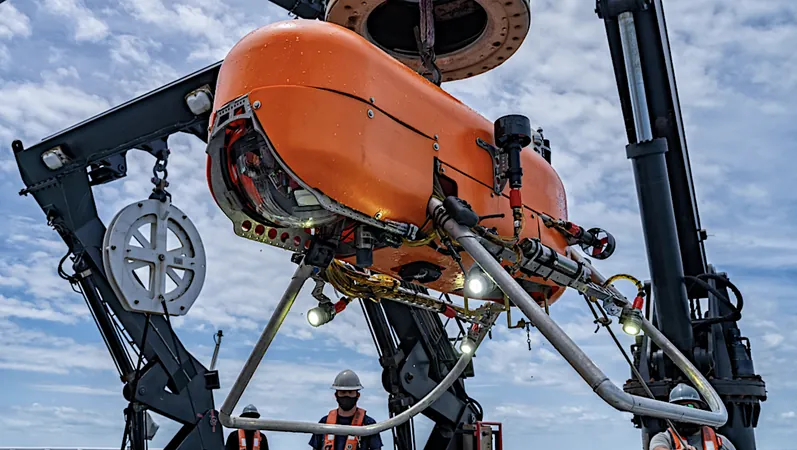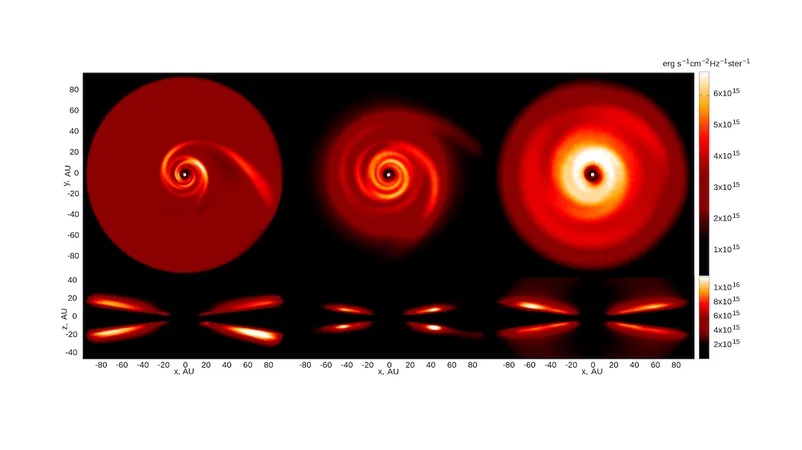
Unlocking the Secrets of Australia's Extinct Giants: New Biomarkers Illuminate Megafauna Mysteries
2025-06-03
Author: Yu
Revealing Ancient Giants!
A groundbreaking discovery by paleontologists has unveiled peptide markers for three extraordinary extinct species of Australian megafauna: an enormous wombat the size of a hippo, a colossal kangaroo, and a marsupial with massive claws. This advancement may shed light on the mysterious mass extinctions that occurred around 50,000 years ago and whether early humans played a role.
The Debate Heats Up!
The extinction of Australia’s megafauna and the potential interactions with early humans have long spurred debate among scientists. Professor Katerina Douka from the University of Vienna states, "Understanding the geographic range and extinction dates of these megafauna is crucial, yet challenging due to the scarcity of fossil evidence across the continent." Dr. Carli Peters from the University of Algarve echoes this sentiment, noting, "Testing hypotheses about these extinctions is difficult without sufficient fossils."
A New Era in Fossil Analysis!
The researchers are employing a revolutionary technique called zooarchaeology by mass spectrometry (ZooMS), which can vastly increase the number of identified megafauna fossils, provided that collagen peptide markers for these species are developed. Collagen, which survives better than DNA over millennia and in harsh climates, presents a unique opportunity for uncovering Australia's fragmented fossil history.
Meet the Megafauna!
Focusing on the species Zygomaturus trilobus, Palorchestes azael, and Protemnodon mamkurra, the team aims to detail the extinction narratives of these colossal creatures. Zygomaturus trilobus, resembling a giant wombat, and Palorchestes azael, a marsupial with a protrusible tongue and huge claws, both disappeared during the Late Quaternary. In contrast, Protemnodon mamkurra lingered long enough to potentially cross paths with early humans in Tasmania.
The Results Are In!
Using the preserved collagen from these fossils, researchers successfully identified unique peptide markers for each species. This allowed them to differentiate Protemnodon from several other kangaroo genera, as well as Zara and Palorchestes from their modern and ancient counterparts. However, they found it challenging to distinguish between Zygomaturus and Palorchestes due to the slow evolution of collagen.
Future Adventures in Paleontology!
The implications of this research are immense—by developing these novel collagen markers, scientists can expect to identify a greater number of megafauna remains in Australia's paleontological records. Yet, Dr. Peters emphasizes that more work remains, particularly in characterizing markers for other species, such as the immense Diprotodon and the fierce Thylacoleo. The journey into understanding Australia's ancient giants is just beginning!
Scientific Impact!
The team's essential findings have been published in the journal *Frontiers in Mammal Science*, offering a new lens through which we can view the extinction saga of Australia's megafauna. With these advancements, the researchers are poised to unlock deeper truths about the relationships between these awe-inspiring creatures and their environment.





 Brasil (PT)
Brasil (PT)
 Canada (EN)
Canada (EN)
 Chile (ES)
Chile (ES)
 Česko (CS)
Česko (CS)
 대한민국 (KO)
대한민국 (KO)
 España (ES)
España (ES)
 France (FR)
France (FR)
 Hong Kong (EN)
Hong Kong (EN)
 Italia (IT)
Italia (IT)
 日本 (JA)
日本 (JA)
 Magyarország (HU)
Magyarország (HU)
 Norge (NO)
Norge (NO)
 Polska (PL)
Polska (PL)
 Schweiz (DE)
Schweiz (DE)
 Singapore (EN)
Singapore (EN)
 Sverige (SV)
Sverige (SV)
 Suomi (FI)
Suomi (FI)
 Türkiye (TR)
Türkiye (TR)
 الإمارات العربية المتحدة (AR)
الإمارات العربية المتحدة (AR)